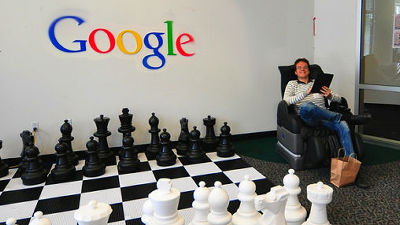Thorough commentary on the 'unconscious bias' lecture that Google is conducting in employee education

Unconscious Bias @ Work | Google Ventures | Office for Institutional Equity
https://oie.duke.edu/knowledge-base/toolkit/unconscious-bias-work-google-ventures
You can check the movie of the lecture on Google's unconscious bias from the following.
Unconscious Bias @ Work | Google Ventures --YouTube
Brian Welle, a human analyst at Google, will give a lecture on unconscious bias to Google's Human Resources department.

Welle first picked up a poster for the tech drama 'Silicon Valley.' This poster is for men only, not for women. Welle said, 'This poster means that the general idea is that the head of an IT company is a man. In fact, among American ventures and startups, women Only 11% of the companies are at the top. ' In other words, there is an unconscious bias of 'IT company = male'.
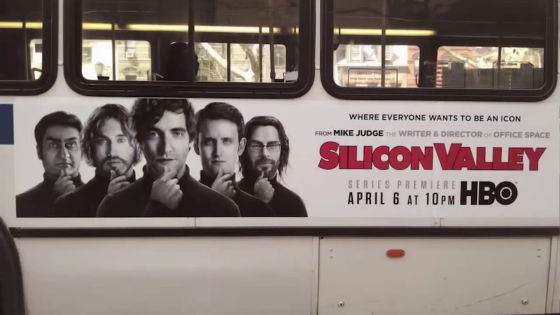
Then, what is the one-piece bias? Welle explains the bias using a lion as an example. When I saw a lion, I was taken from the thought process of 'There is a beast standing on four legs. It looks like a cat and has a mane. It must be a lion. A lion is a carnivore. So run away.' The decision to 'escape' is an unbiased decision. When this thinking process is biased, the moment you see a lion, you recognize it as a lion and quickly reach the action of 'escape.'

According to Welle, biased decision making takes an overwhelmingly shorter time in the thinking process than when it's not biased, while unbiased decisions are time-consuming but functional. It seems that he has one side.
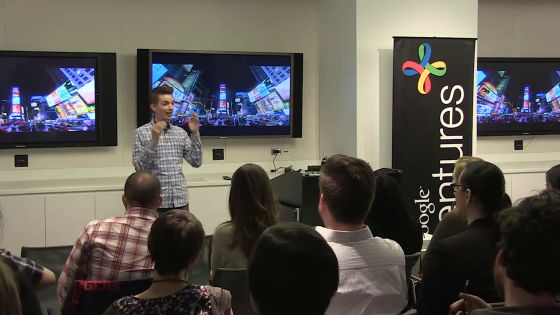
Humans receive as much as 11 million pieces of information per second, but can only process 40 per second. In other words, 99.999996% of the received information cannot be processed and is unknowingly passed through.

From here, Welle tests his employees for bias. The content of the test is as simple as raising the 'left hand' if the word displayed on the screen is related to men, and the 'right hand' if it is female.
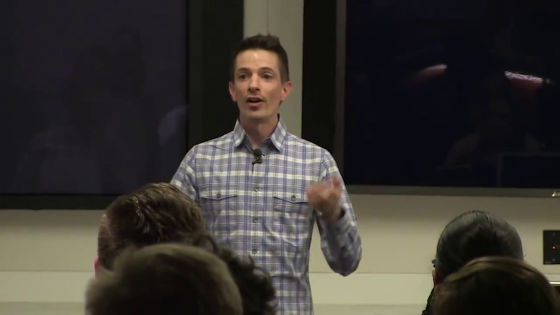
When 'husband' is displayed on the screen, the employee raises his left hand.
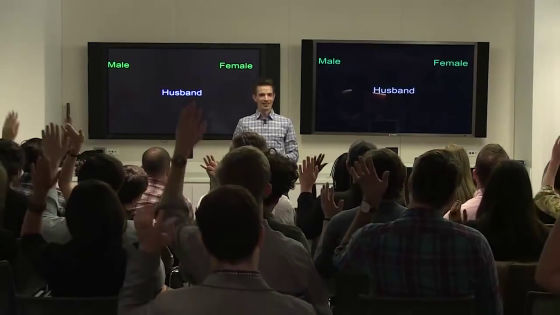
If 'wife' is displayed, raise your right hand. After repeating this several times ...
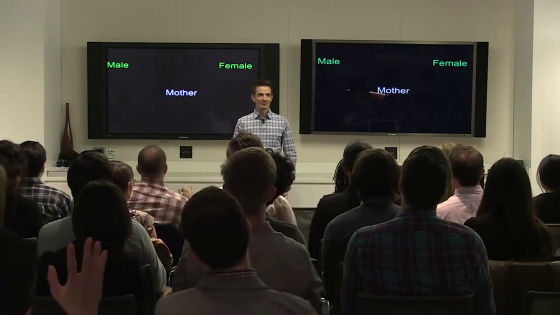
This time, we will do a test that raises the left hand for 'Liberal Arts' and the right hand for 'Science'. 'Engineering' is on your right ...
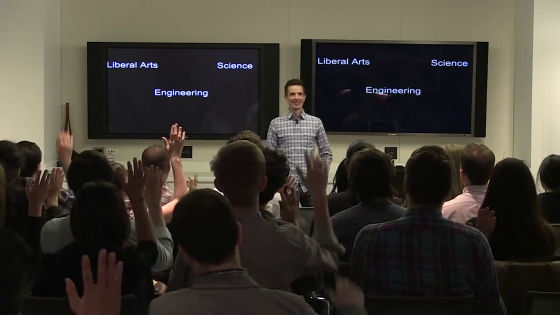
'Music' is like the left hand.

At the end, 'female or liberal arts' is the left hand, and 'male or science' is the right hand. Everyone raised their left and right hands while showing a little hesitation.
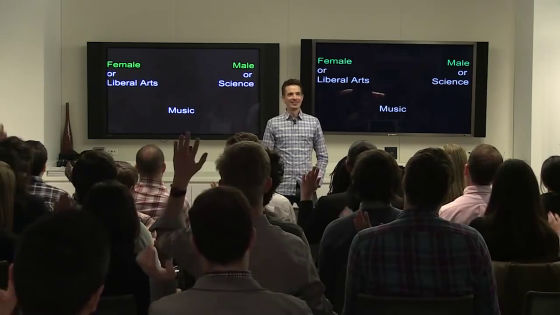
After the test, Welle explained, 'What I've done now is called the
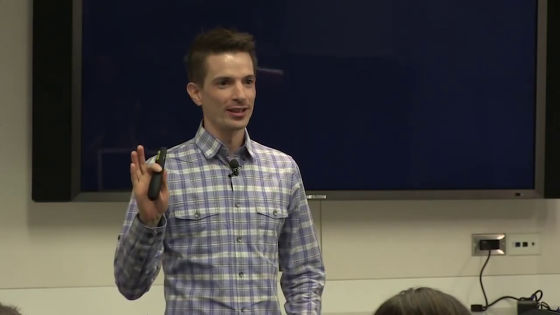
After explaining to the employees what the bias is, it's finally time to move on to the main subject of the lecture. Diversity is important for companies, and Google aims to be as diverse as any other company. A company with diversity is a company that employs a variety of human resources regardless of gender, nationality, race, educational background, etc. According to Welle, companies with female executives are making about 53% more profit than non-female companies. Diversity is a very important factor in complex decision making and creativity, but it is the 'unconscious bias' that negates the strengths of diversity.
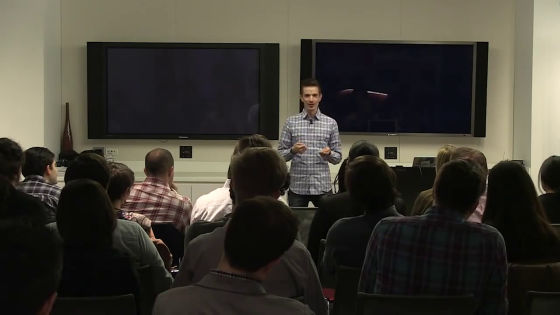
How to overcome the unconscious bias that hinders diversity, Welle has the solution: 1: Structure to success, '2: Data collection,' '3: Understanding obfuscated messages,' '4: Responsibility.' Presenting four methods of 'distribution'. If you execute one of these, you can prevent unconscious bias.
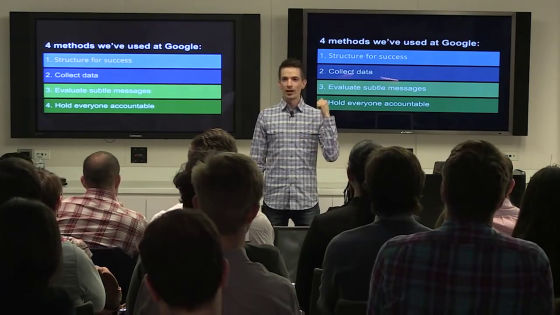
To understand the 'structure to success,' you need to understand 'what exactly does success mean.'
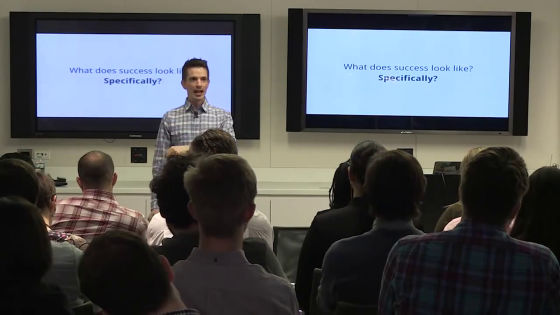
Welle uses a survey conducted by Google to explain the specific implications of success. In this survey, all the elements other than the name are applied for the interview with the same resume, and it is investigated how often the company responds. However, one used typical American names such as Emily and Brendan, and the other used names that are common to African Americans such as Aisha and Tamika. According to the survey results, 1 in 10 resumes of American names were interviewed, but 1 in 15 African American names were answered. This does not mean that the company is rejecting a person named Aisha, but that the unconscious knowledge of African Americans accumulated from the past makes it so.
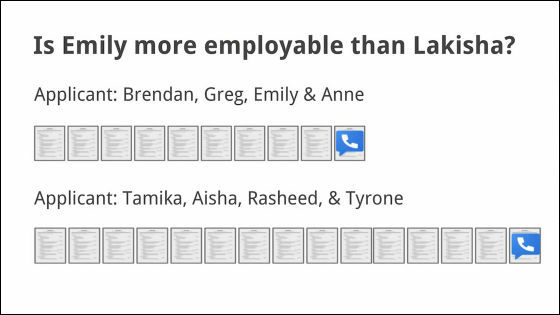
How to get rid of the effects of unconscious knowledge, or bias, Welle said, 'What is the company's success to overcome the unconscious bias, and what does the person who sent the resume bring to the company? You need to have a solid understanding of. Remove the extra parts from your resume regarding the company's success. For example, is the name important? It doesn't matter. The address, academic background doesn't matter. Google's own academic background. Employee surveys have revealed that 'education does not affect work performance.' Employees in the human resources department often care about 'the year they graduated from the school with their final education.' I often predict my age from the year, but age has nothing to do with my work performance. As a result, I have little to look at in my resume. Think about your questions based on what's in your resume. Instead, you should understand what is most important to you as a company and think about your questions. '
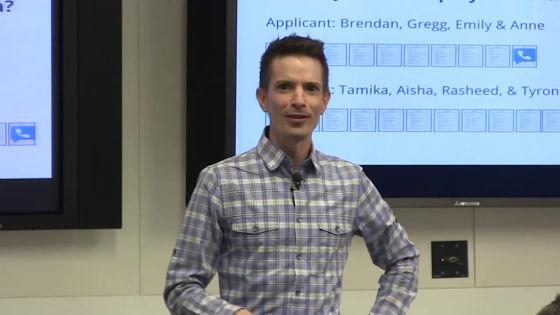
In addition, Mr. Welle says 'the year of graduation described in the resume' is because age discrimination is illegal in the United States, so there is no need to enter the age on the resume, and the recruiter is 'school with final education' It is customary to predict the age of applicants from the year they graduated from.
To eliminate unconscious bias, Google conducts 'constructed interviews'. This is an interview method that Google has been trying in recent years, before the interview based on the two points of 'what kind of industry is recruiting human resources' and 'what is necessary to do the job'. Create a question and ask all the interviewees the same question. It's sometimes criticized as a robot, but Google's research shows that unprepared, natural-looking interviews don't have direct consequences for a company's success. That. The constructed interview seems to be best suited to reduce the effectiveness of the unconscious bias and hire successful people in the company.
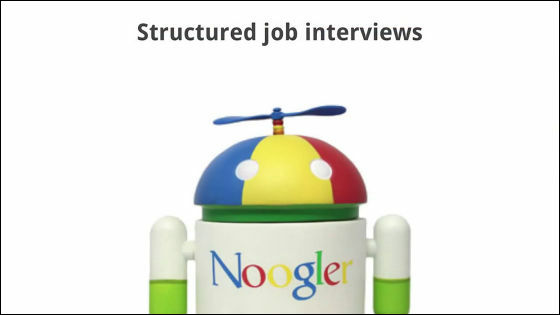
The second way to eliminate unconscious bias is 'data collection'.
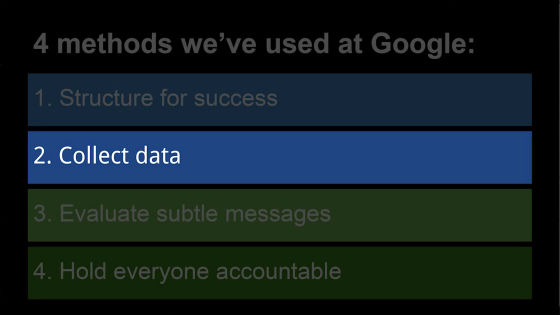
The Human Resources Department sometimes creates work evaluations for employees, but it is important to collect data so that there is no bias when creating them. For example, let's say a man and a woman work together on a project and the affairs department creates a work evaluation. One group has a well-defined division of roles and can calculate data for roles.
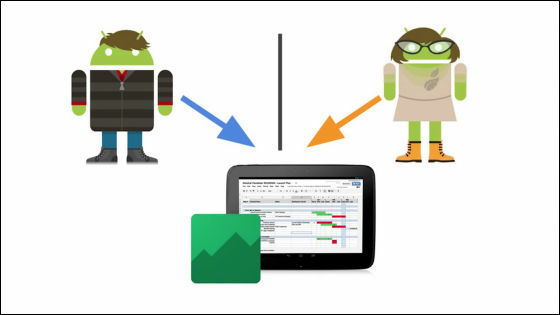
The other group will work together to complete the task. Since the data does not show what the two people did individually, personnel affairs create a work evaluation using elements other than the data.
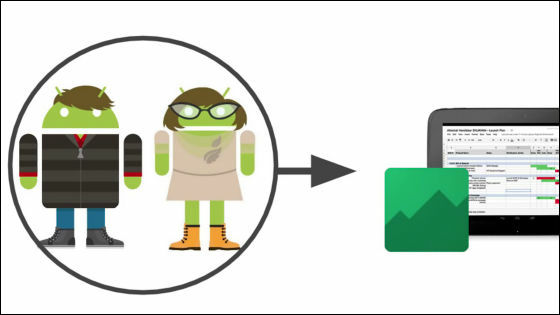
When calculating the work evaluations for the two groups, there is almost no difference in points between men and women who perform tasks individually. However, in the latter, where no data was available, females scored significantly lower than males.

This is data from Google's internal research, Welle said, 'The low points of women in the latter group can be said to be the result of the unconscious bias having a big impact. It is correct to weaken the effectiveness of the unconscious vise. Data-based decisions are very important. '
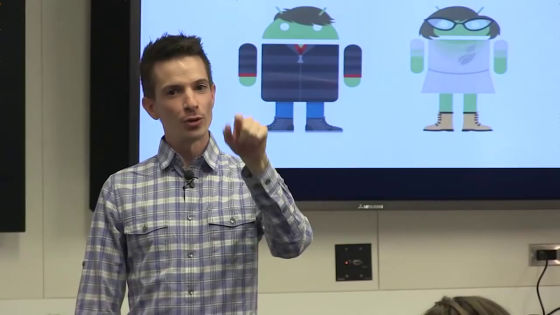
The third is 'understanding of confusing messages', but at first glance I don't know what it is.
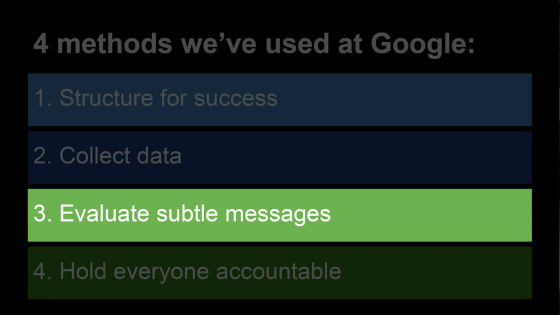
Welle explained 'understanding of confusing messages' using the results of a survey conducted by Google on employees, 'listing five employees who interact with the company.' The image below is a mapping of the engineer's survey results, and you can see that the innumerable blue dots are connected by a line. According to Welle, the person in the center of the blue figure can collect more information and is more influential.

If you add the results of green personnel and red sales to the above survey results, it will be as shown in the figure below. Looking at the figure, we can see that there are few contacts between engineers, personnel, and sales, and there is no cross-departmental connection, which is not a plus for the company.
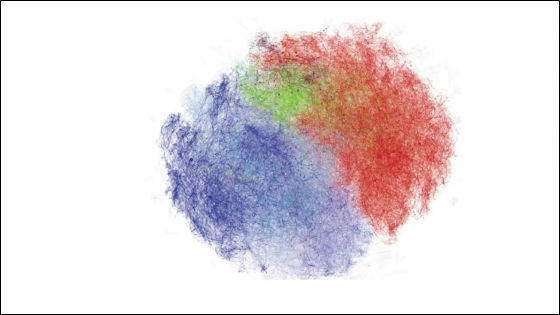
According to Welle, the only thing that can be done with employees in the same department or people they know is that there is a kind of bias. To solve this, it is necessary to get involved with employees that you do not know, or to visit different departments and communicate with each other. One way is to communicate with unfamiliar employees in a shared space or cafeteria.
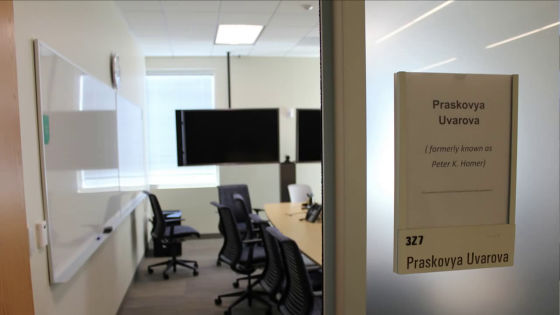
The last method is 'everyone is responsible'.
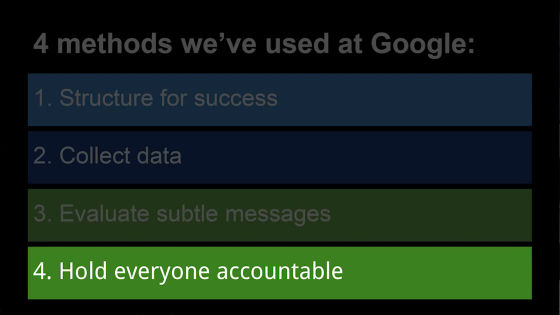
'Everyone is responsible' means that one person does not make decisions at his or her own discretion. For that purpose, it is important to 'confirm with each other whether there is a bias', 'have others evaluate one's decision-making', and 'hold a meeting and reflect the opinions of many people in the decision-making'. The process of this process takes longer than making an arbitrary decision, but it seems worth doing.
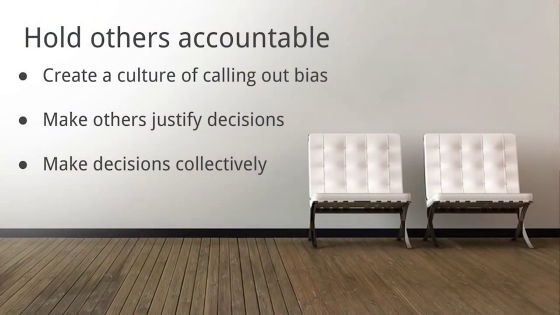
This concludes Mr. Welle's lecture. Welle's lecture was given to the Human Resources Department, but it explains the unconscious bias in a very easy-to-understand manner, how important it is to make judgments that are not biased in everyday life, and not to bias them. It was a good understanding of how difficult it was.

Related Posts:
